Sometimes the tiniest drawers cause the largest daily messes—yet transforming them into streamlined helpers takes far less time and money than most people expect. A thoughtfully arranged bathroom drawer keeps toiletries visible, cuts morning-rush stress, and stops expired products from breeding in dark corners. By pairing deliberate decluttering with the right inserts, dividers, and labeling habits, anyone can coax even shallow drawers into orderly powerhouses that feel almost spa-like each time they glide open. Below you’ll find twenty practical, experiment-tested bathroom drawer strategies. Each stands alone, but together they form a sustainable system that saves minutes, money, and mental bandwidth day after day. Ready for calm? Let’s dive into the ideas.
1. Declutter First: Empty Every Bathroom Drawer
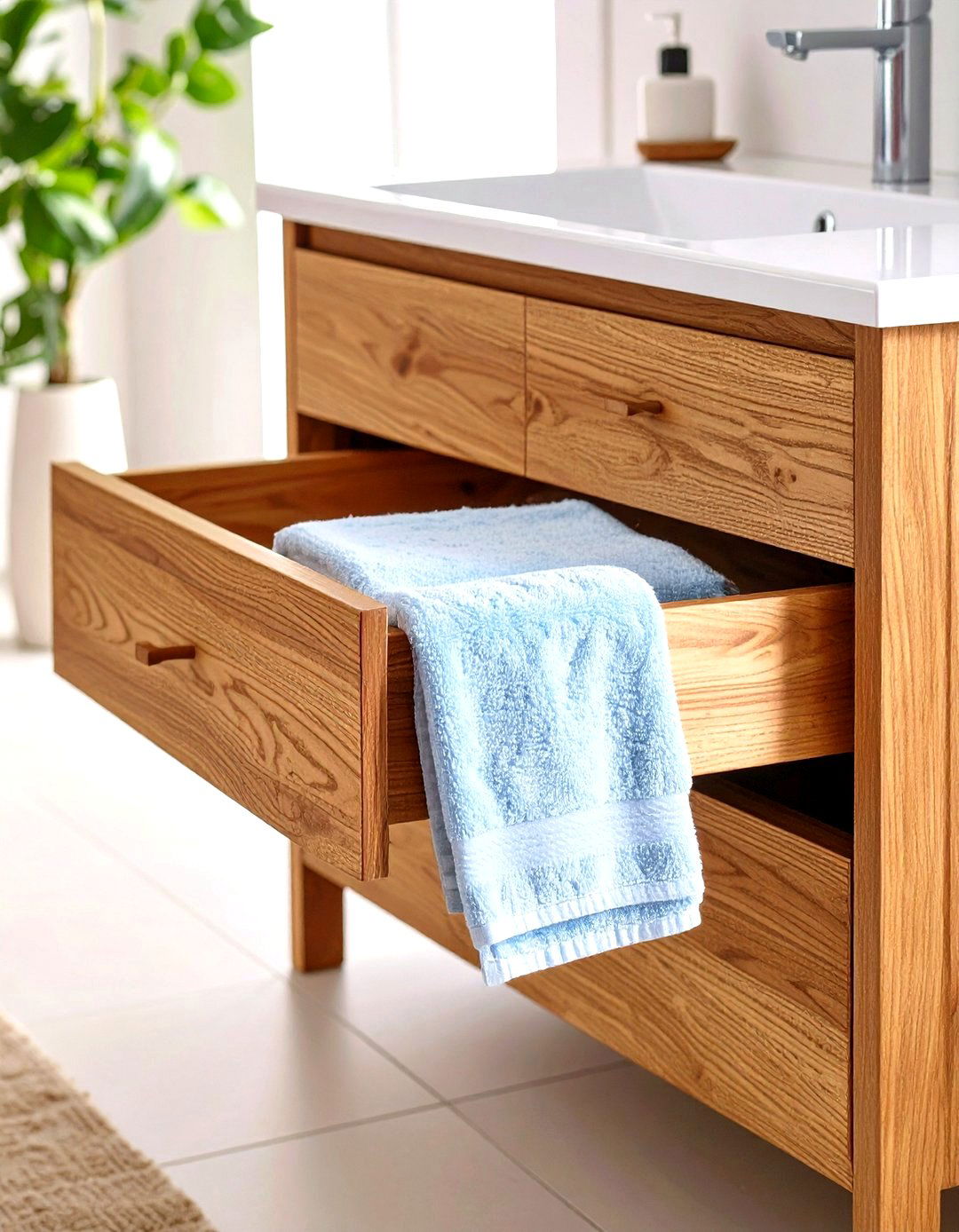
A fresh start begins by pulling every item out of the bathroom drawer, wiping the cavity clean, and tossing duplicates, leaks, and expired goods. Organizing experts note that working with a totally blank space helps you see true capacity and prevents simply shuffling clutter around. Once emptied, group what remains by function—skincare, first-aid, makeup—then double-check whether each piece actually gets used. This critical purge usually frees 20-40 percent of drawer volume, giving later inserts room to shine. Keep a small trash can nearby and let ruthless honesty guide decisions; the lighter load will feel instantly liberating the next time that drawer slides open.
2. Categorize by Daily Routine in the Bathroom Drawer
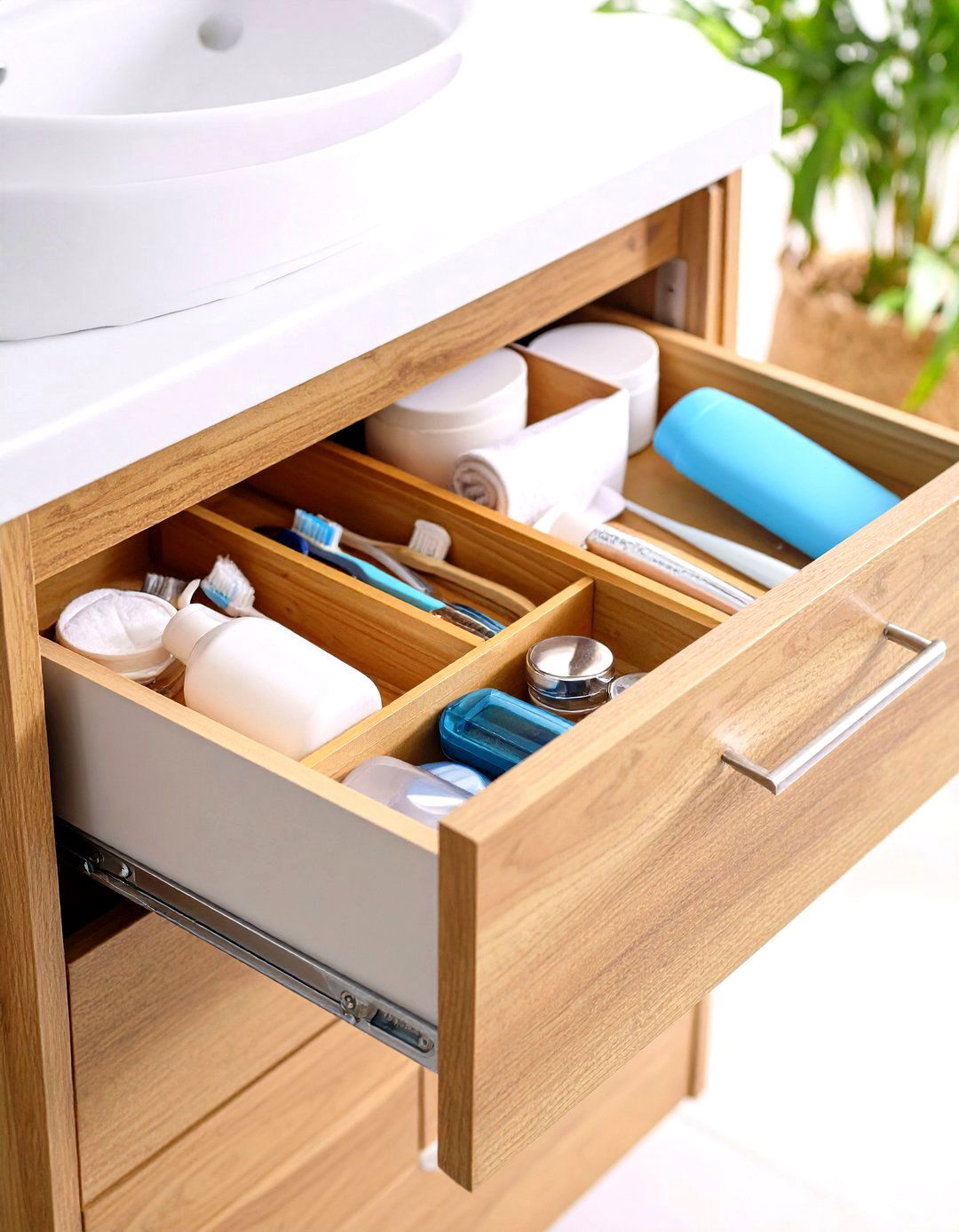
After decluttering, rebuild the bathroom drawer around the sequence of your morning or evening ritual. Place the first products you reach for—think toothbrush, cleanser, or moisturizer—nearest the handle so they’re grabbed in one smooth motion. Mid-routine items sit just behind, while occasional or bulky pieces occupy the back. This “flow layout” turns the drawer into a visual checklist that reduces fumbling and forgotten steps. Every time you open it, the arrangement quietly coaches you through self-care, reinforcing habits without mental effort. If multiple people share the space, dedicate the left half to one routine and the right half to another to avoid mix-ups.
3. Use Modular Clear Bins for Drawer Visibility
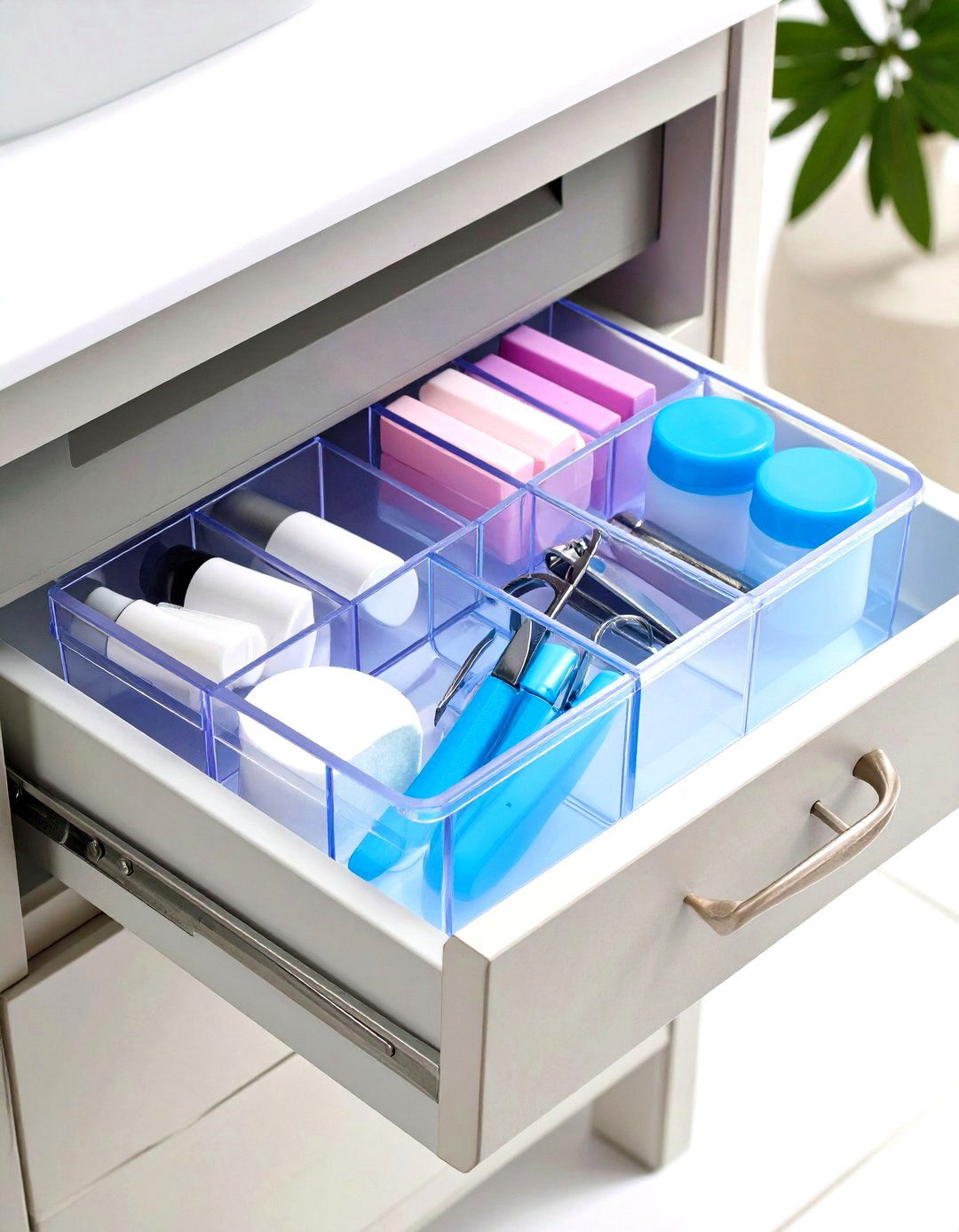
Transparent, modular bins create instant order because you can see exactly what lives in each pocket of the bathroom drawer without removing the tray. Clear acrylic sets such as shallow rectangles or squares fit together like puzzle pieces, letting you customize the footprint around faucets or plumbing cut-outs. Their slip-resistant bases keep lip balms and nail clippers from drifting into a tangled pile, while the see-through walls stop you from accidentally buying duplicates. Choose bins no taller than the drawer’s sides so they glide smoothly; stack mini lids or cotton rounds in the smallest cubes to maximize every inch.
4. Try Bamboo Drawer Dividers for Warm Aesthetics

If you prefer a spa-like vibe over industrial plastic, expandable bamboo dividers slide into the bathroom drawer and lock in place with gentle tension, instantly carving out neat lanes for rolled washcloths or skincare tubes. The sustainable material resists water spots, feels warm to the touch, and hides stray powder spills better than clear alternatives. Because bamboo inserts adjust from about 13 to 19 inches, they adapt to standard or extra-wide vanity drawers without tools. Arrange two dividers crosswise to create a grid, then drop smaller tins inside each cell for a tailored, furniture-grade finish that still wipes clean with a damp cloth.
5. Stackable Trays Maximize Vertical Drawer Space

Shallow bathroom drawers waste precious air above flat items like eye-shadow singles. Stackable trays solve that issue by adding a second “floor” where rarely used products can reside. Clear plastic lids on the lower tier keep powder or bobby pins dust-free, while notches on the upper tier allow quick lift-off when you need what’s beneath. Measure drawer height first—most vanities accept two 1.5-inch trays comfortably. Reserve the top layer for festival glitter or spare razor cartridges; daily basics remain in the bottom tray for grab-and-go access. This simple upgrade can double storage capacity without drilling or cabinetry work.
6. Allocate a Shallow Drawer Just for Makeup

Designate one bathroom drawer exclusively for cosmetics to prevent foundation bottles from toppling onto toothbrushes. Use thin dividers or silicone lipstick grids so every shade stands upright, labels facing up for fast swatching. Group palettes by color family and slip rubber bands around fragile compacts to stop crumbling powders. A mirrored lid placed on the organiser turns the drawer into a mini vanity; simply slide it open and apply products right there, then close to conceal the mess. Keeping makeup separate also protects skincare from pigment transfer, reducing cleanup time and product contamination.
7. Dedicate Deeper Bathroom Drawer to Hair Tools
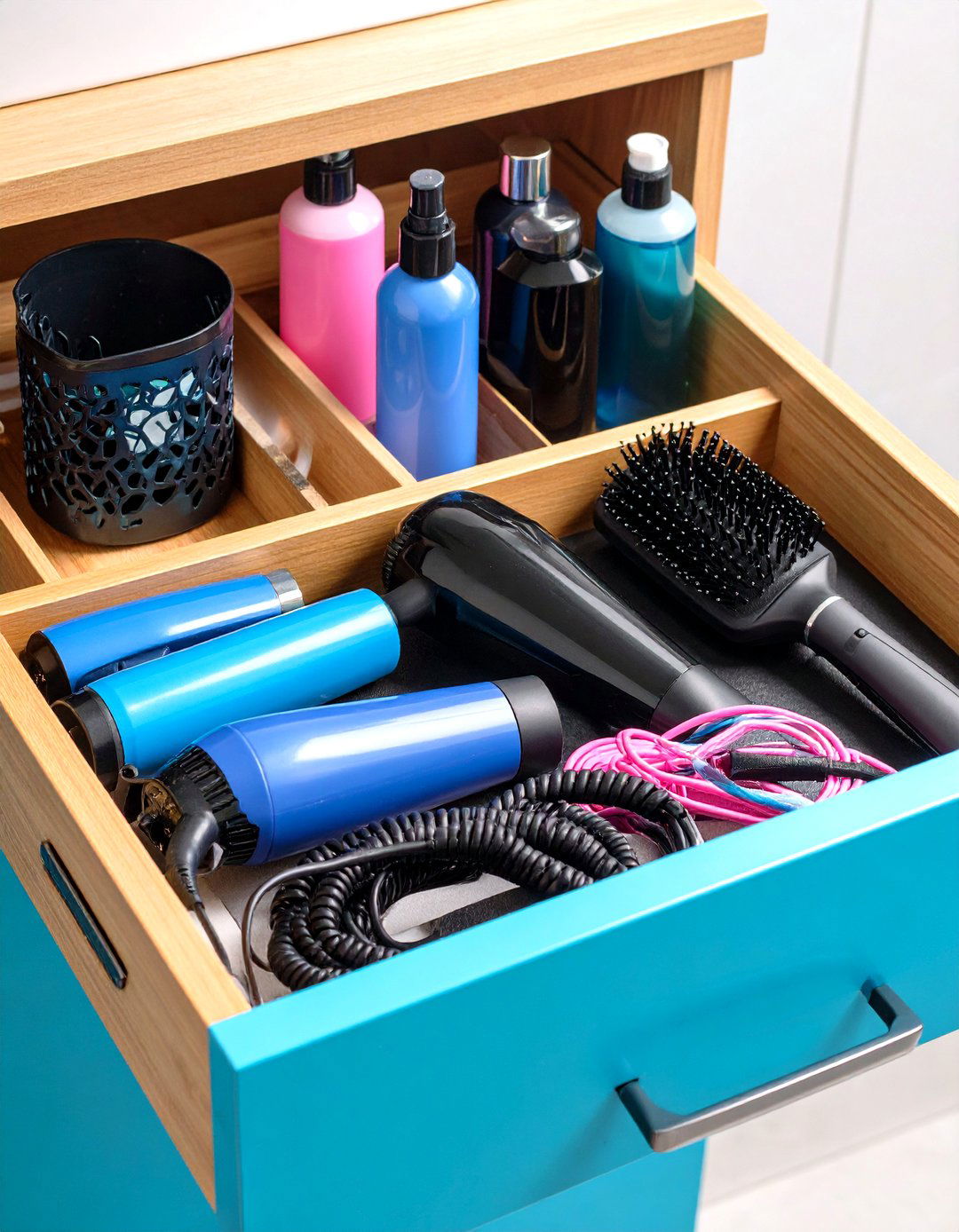
Curling irons and blow-dryers often sprawl across counters because standard organisers are too short. Assign the deepest bathroom drawer to heat-styling gear, lining it with a silicone mat that tolerates warm barrels. Coil cords with Velcro ties and nest them in the rear so handles sit front-and-center; this prevents tangles and quickens morning prep. If you own multiple brushes, place a tall acrylic cup in one corner to hold them upright. The leftover side space suits heat-protectant spray and hair serum, creating a self-contained salon station you can shut out of sight once styling ends.
8. Store Backstock Items in Rear Drawer Sections
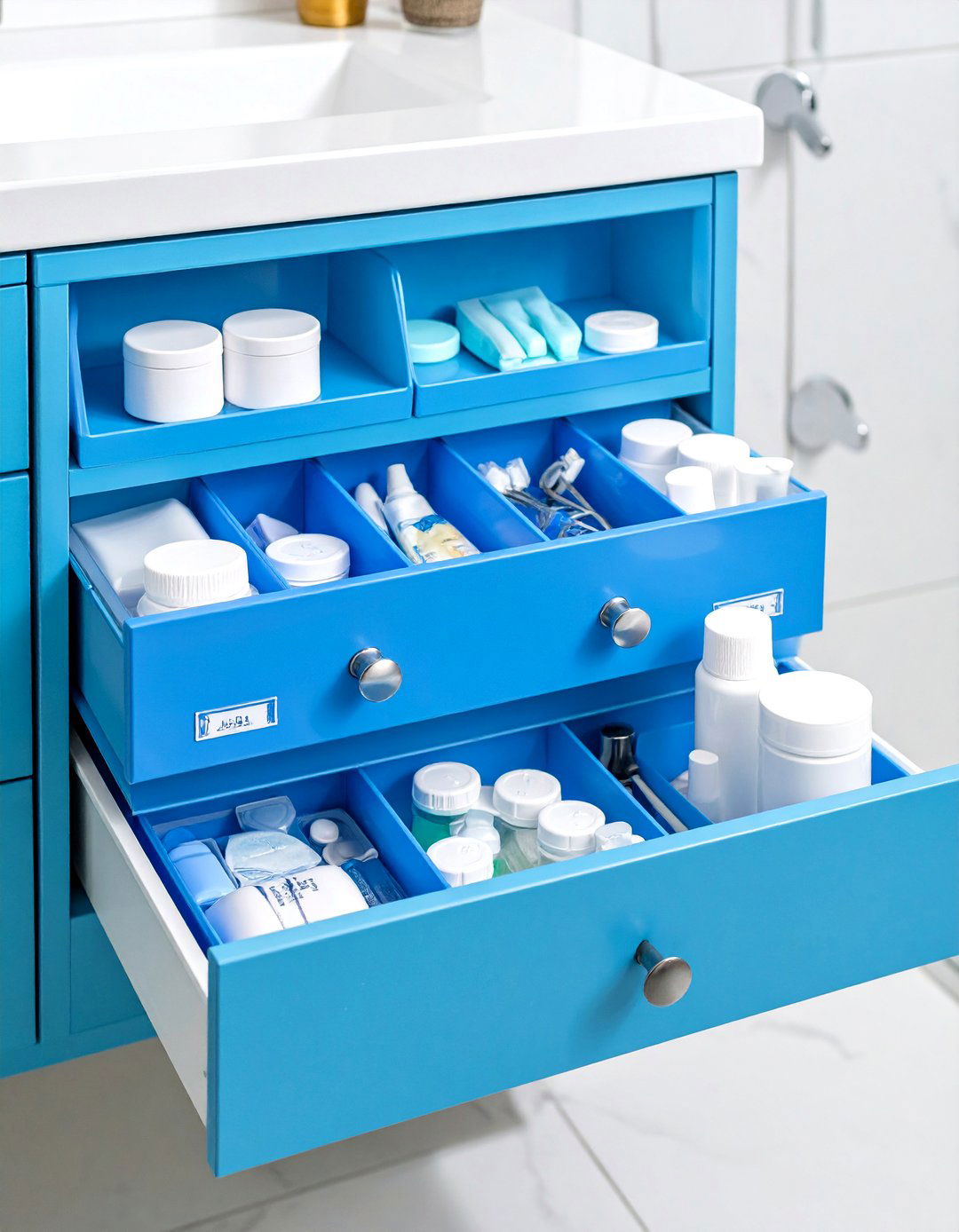
Even after decluttering, you’ll likely keep spare toothpaste tubes or unopened contact-lens cases. Tuck these “store supplies” into the very back of the bathroom drawer, labeled by category, so front zones remain reserved for current items. Modular bins with raised lips prevent backup stock from migrating forward, and a quick glance tells you when it’s time to restock. This practice lowers duplicates and grocery runs because you always know what’s on hand. Keep only one replacement of each consumable to stop overflow; the backstock area should feel slim, not stuffed.
9. Create a Mini First-Aid Drawer Zone
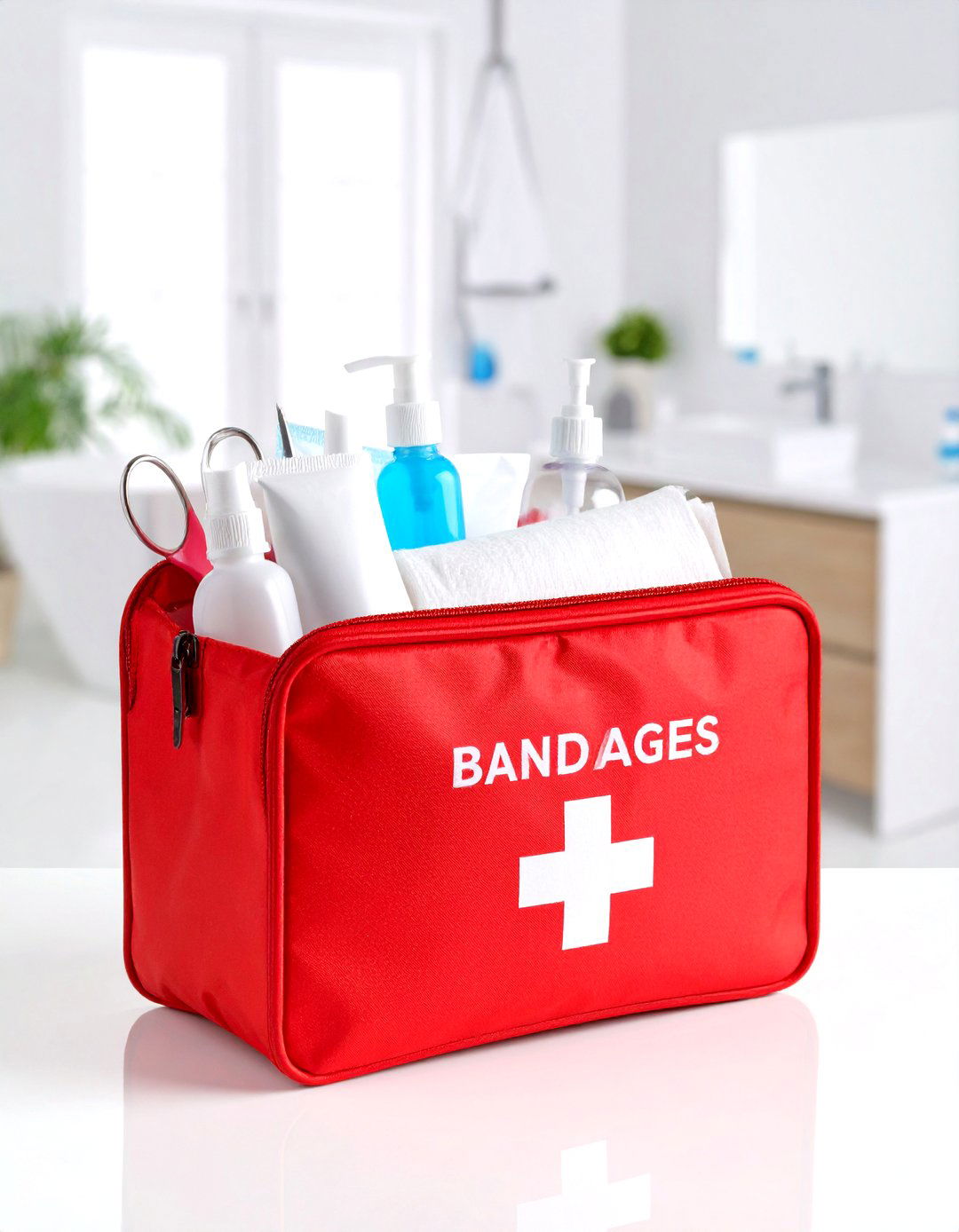
Dedicating one bathroom drawer corner to first-aid essentials ensures speedy response when accidents strike. Fill a small latching box with adhesive strips, antiseptic wipes, tweezers, and gauze packets, and label the lid “Bandages” in bold pen. Including blister plasters and a tube of antibiotic ointment covers most bumps while keeping medicine cabinet shelves free for larger bottles. Because the box sits inside a pull-out drawer rather than a high shelf, young family members can access supplies safely under supervision. Swap contents every six months, discarding expired items before injuries force a frantic search.
10. Use Rolling Drawer Inserts for Kids’ Supplies
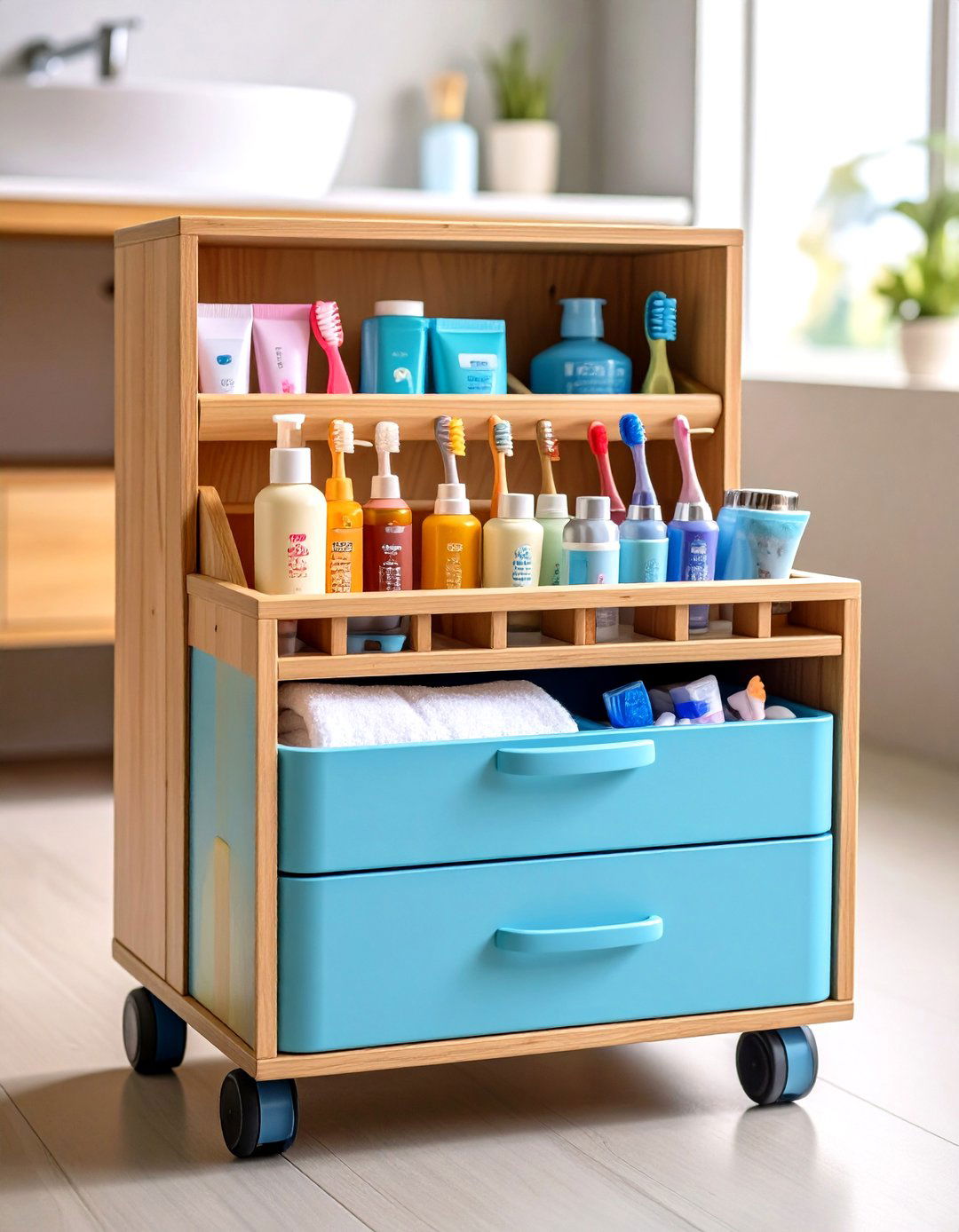
Shared bathrooms get chaotic when little ones rummage for toothpaste. A rolling caddy designed for narrow bathroom drawers lets kids slide their insert out, brush, then push it back, maintaining consistency. Divide the tray into morning and bedtime sections—flossers on one side, flavored toothpaste on the other—to teach routine order. Lockable wheels prevent the organiser from tipping off the countertop, offering independence without spills. Consult a pediatric dentist to choose age-appropriate tools; keeping them in kid-height drawers encourages correct daily care and frees adult drawers from cartoon-covered tubes.
11. Label the Inside Front Edge of Each Drawer
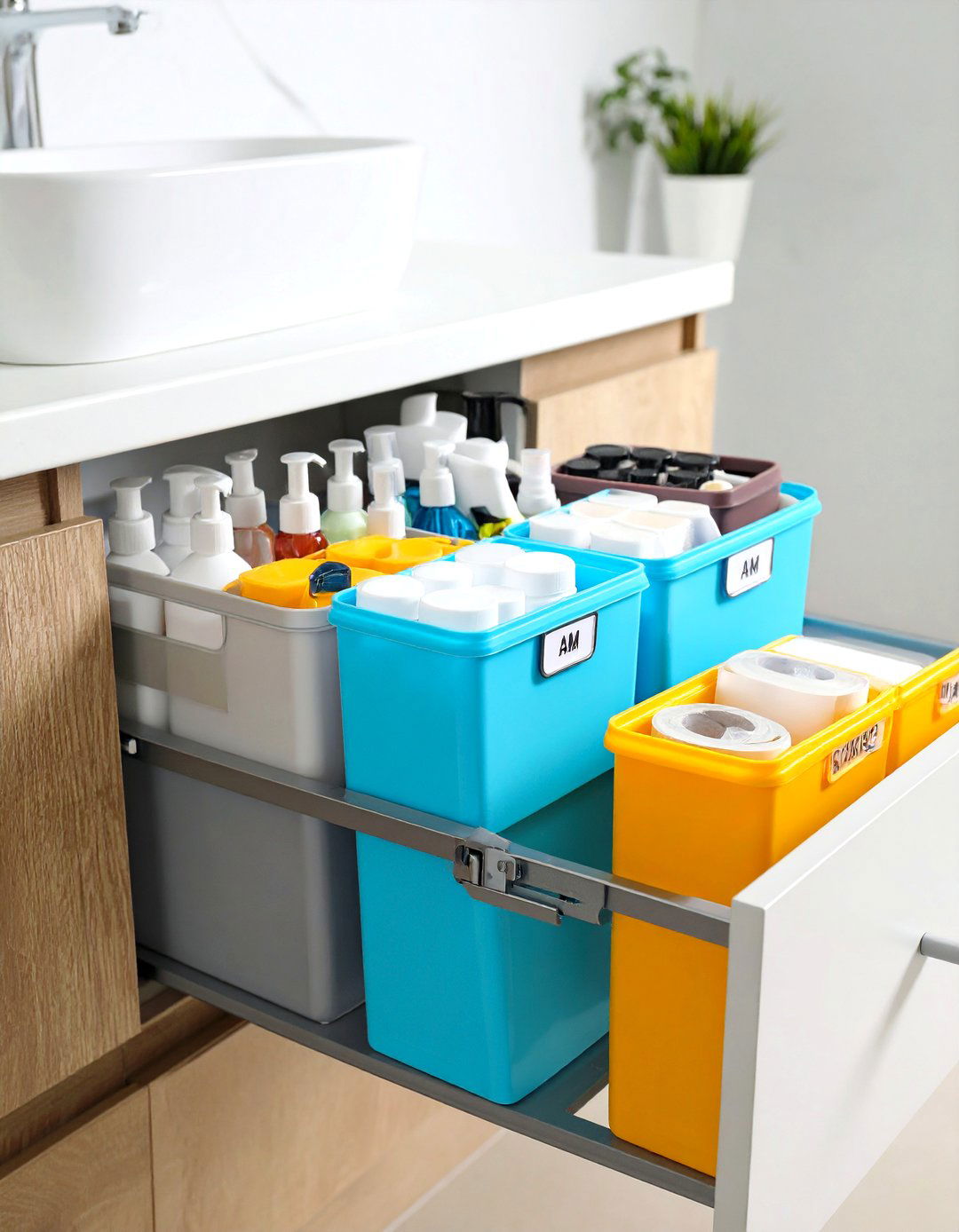
Subtle, interior labels guide quick returns without visual clutter. Stick clear, waterproof label tape along the inside lip of the bathroom drawer, naming zones like “Skincare AM” or “Hair Ties.” Because the words hide when the drawer closes, aesthetics stay sleek yet every family member knows what belongs where. Pair this labeling with consistent container shapes to cement muscle memory; after a week, you’ll find items naturally land back in their assigned slots, maintaining order with minimal policing. Change labels seasonally if routines shift—removable adhesive leaves no residue.
12. Install Non-Slip Liners to Keep Bins Steady
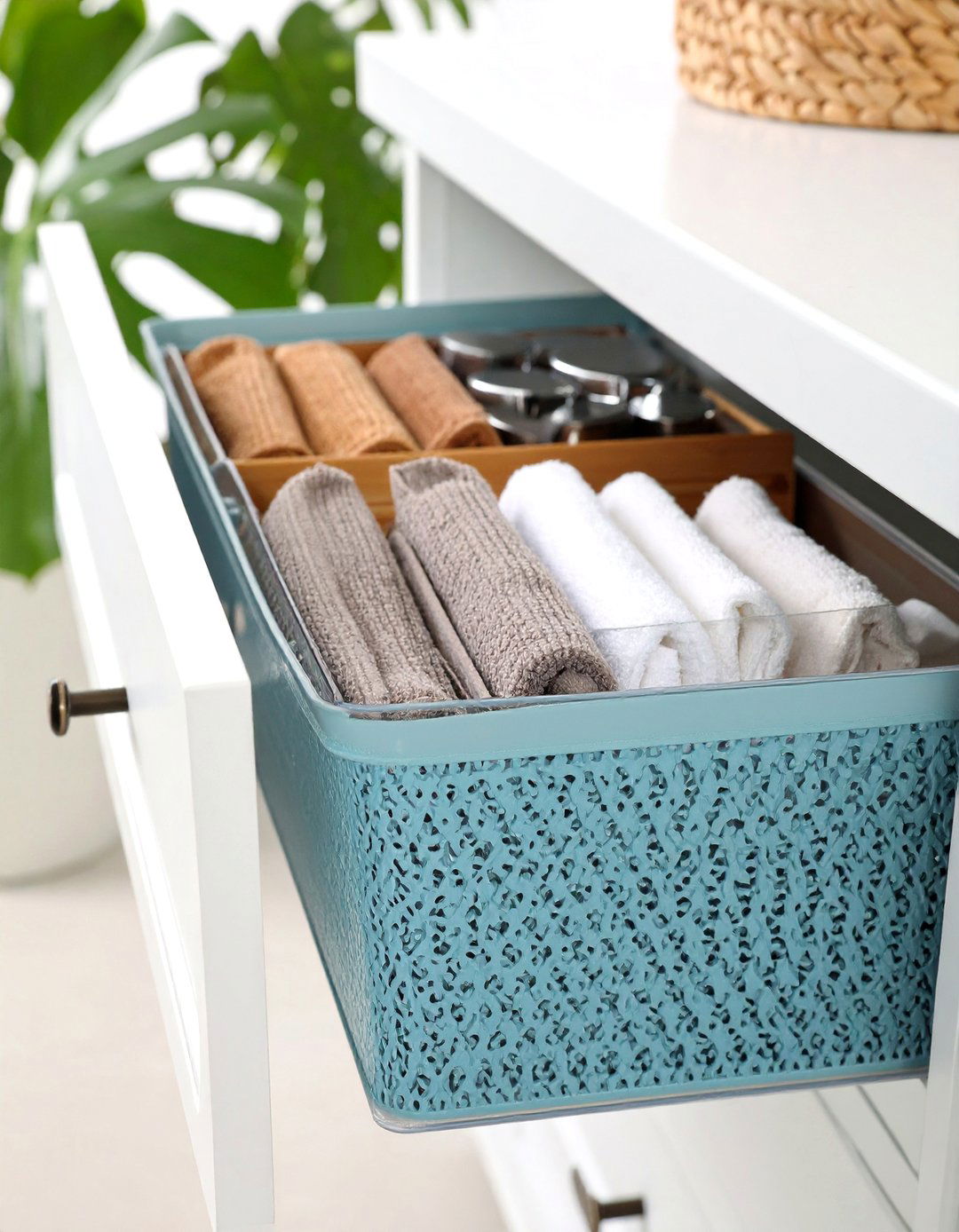
Nothing disrupts a newly organized bathroom drawer faster than bins sliding each time it opens. A simple sheet of grippy, dishwasher-safe liner cut to size creates friction beneath organisers, preventing drift. Choose a liner that is thin enough not to snag tracks yet textured enough to anchor slippery acrylic. The added cushion also dampens rattling sounds, which is especially pleasant during early-morning routines. If moisture is a concern, opt for perforated liners that promote airflow and wipe dry quickly after spills.
13. Keep Cotton Pads & Swabs in Slim Drawer Pods
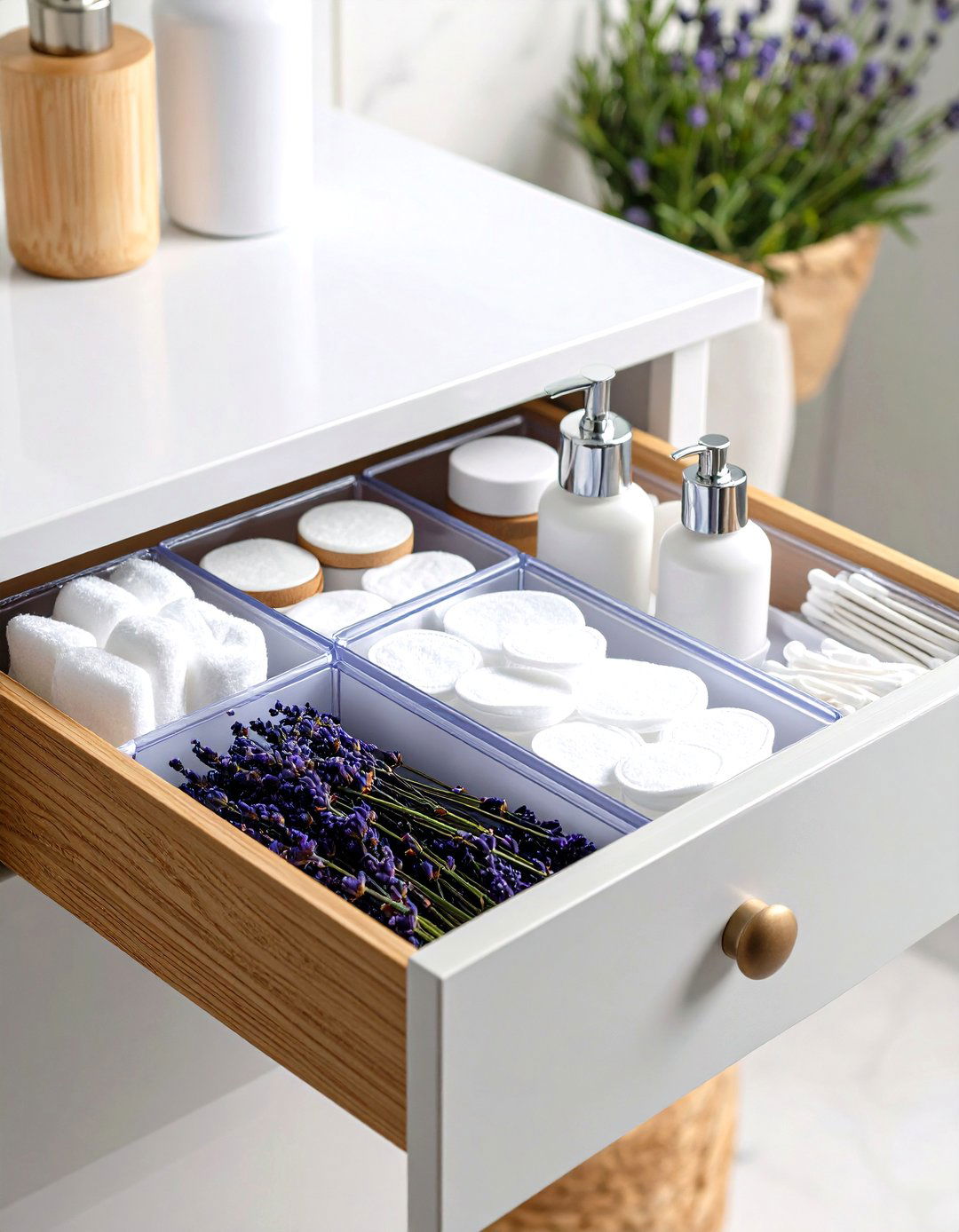
Cotton pads and swabs vanish into messy corners unless corralled. Slim, flip-top acrylic pods fit snugly in the front of a bathroom drawer, letting you pinch one pad without lifting a bulky lid. Because the clear walls highlight dwindling supplies, you’ll remember to refill before midnight skin-care sessions run short. Align the pods horizontally to act as a soft bumper that prevents taller bottles from shifting when the drawer shuts. For extra polish, layer a few lavender buds beneath the pads; the hidden fragrance releases a spa-like scent whenever you open the drawer.
14. Add Charging Stations to Tech-Friendly Drawer
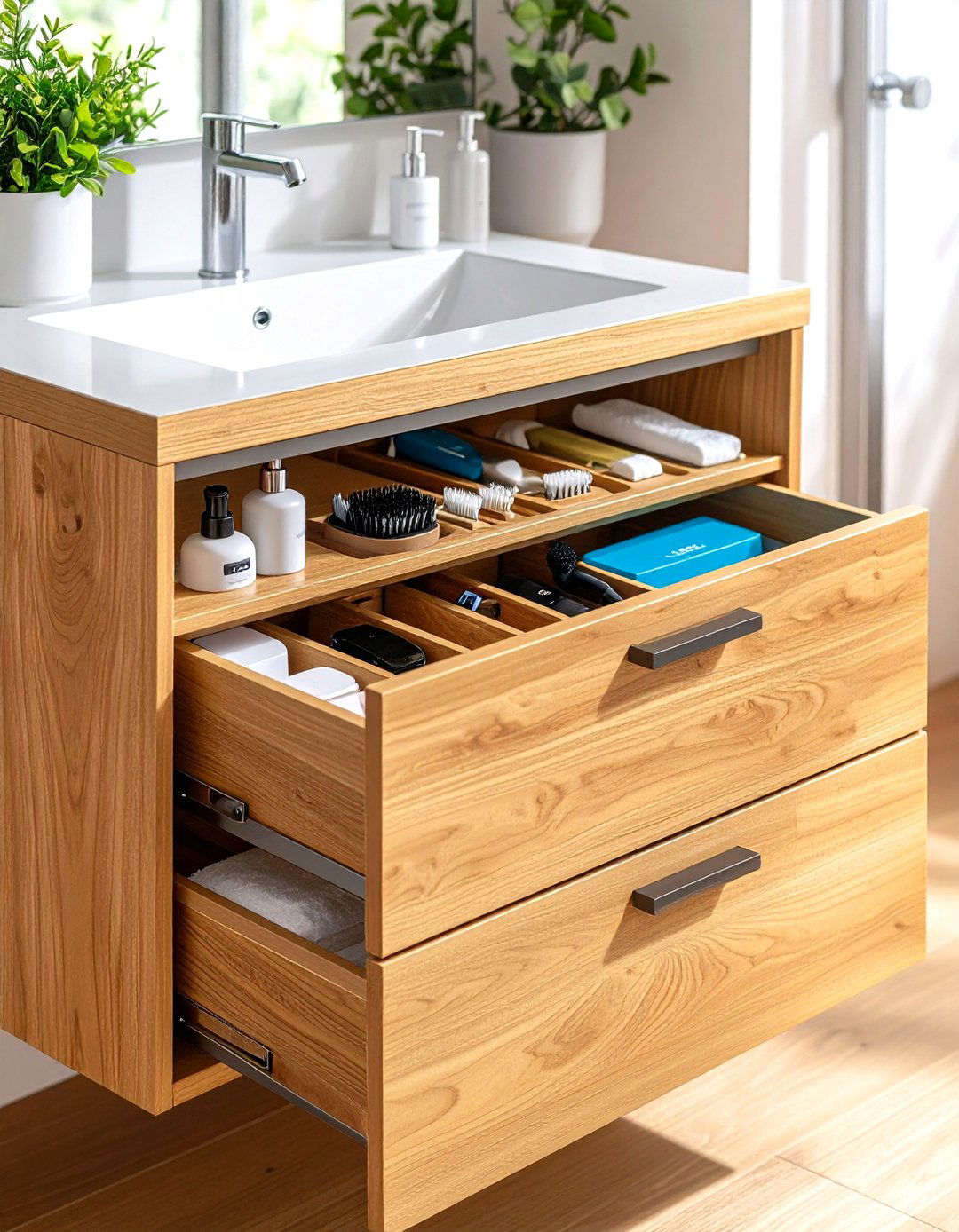
Modern grooming involves rechargeable toothbrushes, trimmers, and facial cleansing devices. A dedicated tech bathroom drawer with built-in cable grommets hides cords while keeping gadgets juiced. Position a surge-protected power strip at the rear, and feed short USB leads through drilled holes or adhesive clips to each device cradle. Silicone cable ties prevent tangles, and a ventilated drawer face ensures heat dissipates safely. Mark the strip’s switch with neon tape so you can cut power during travel or storms. This setup declutters countertops and guarantees that electric tools are always ready without digging behind outlets.
15. Rotate Seasonal Products via Drawer Swap-Out
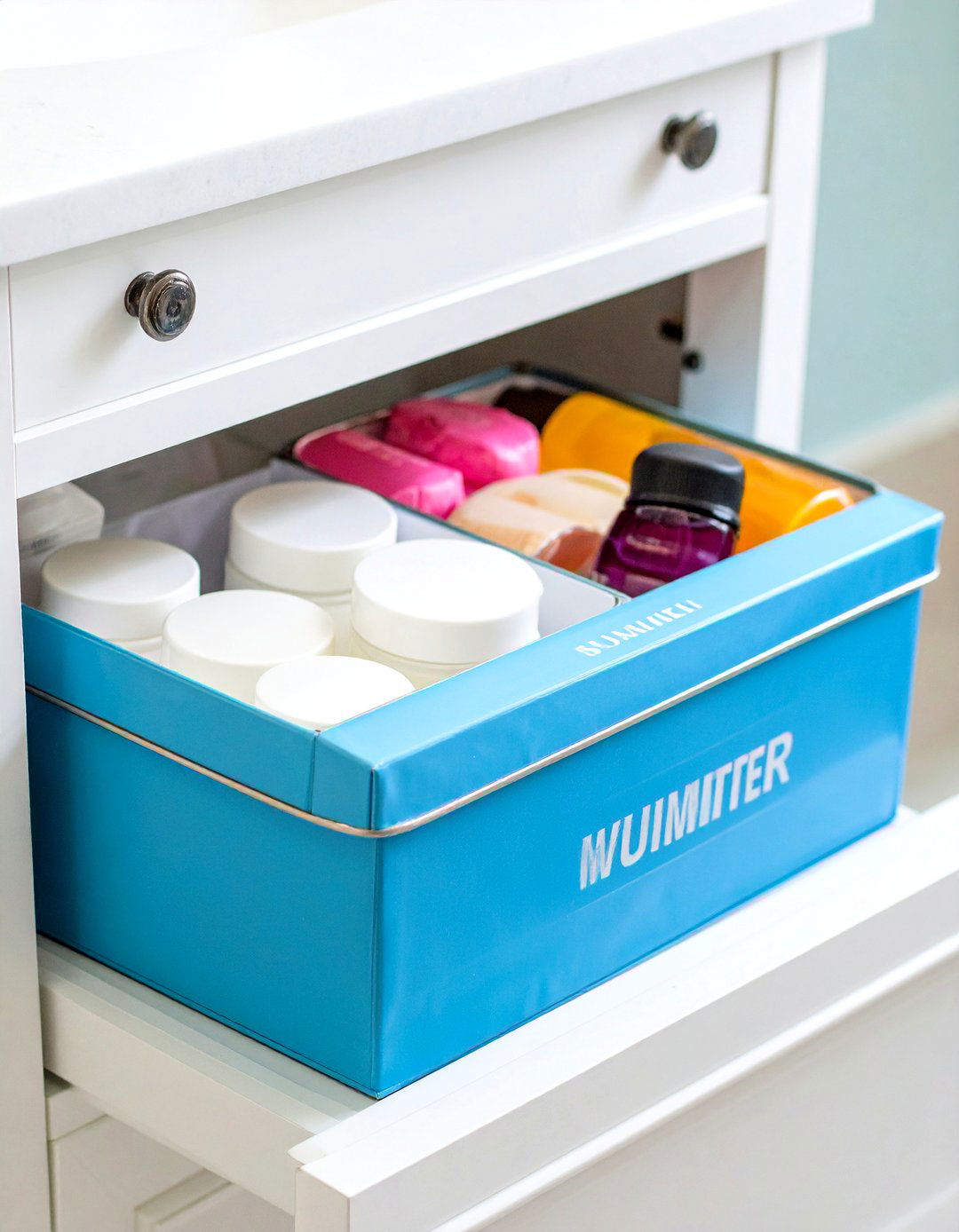
Sunscreen and faux-tan drops deserve prime real estate only in warm months. Create two labeled shoe-box-sized containers—“Summer” and “Winter”—that live on a closet shelf when not in rotation. Every equinox, swap the relevant box into your everyday bathroom drawer, pushing off-season products into storage. This rhythmic refresh keeps the drawer from ballooning and ensures you use products before expiration. It also acts as a mini inventory audit, reminding you which lotions you truly finished and which sat untouched, guiding smarter purchasing next time.
16. Use Color Coding to Simplify Shared Drawers
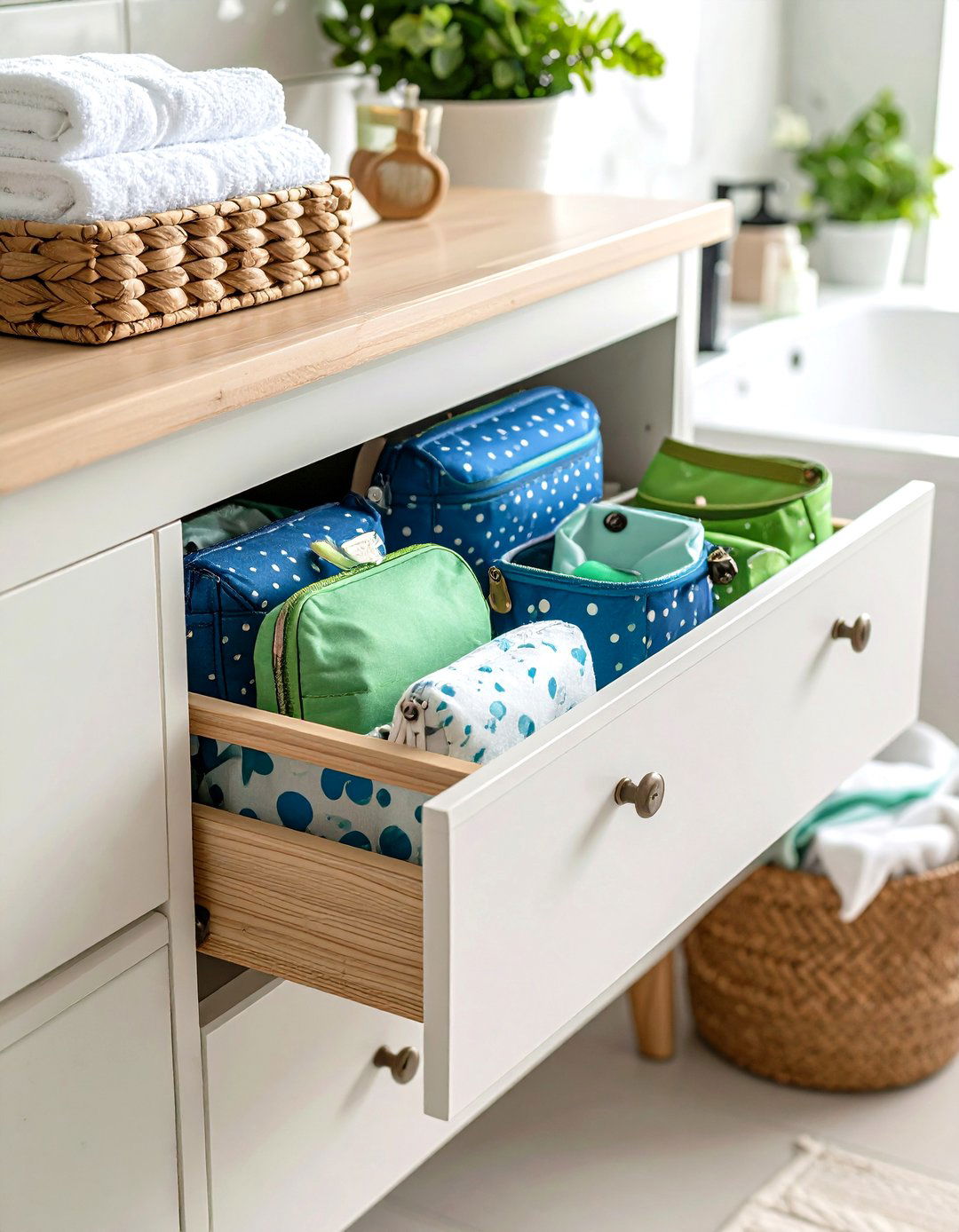
If a couple or roommates share a vanity, attach tiny, coordinated vinyl dots to bin corners: blue for one person, green for another. This visual shorthand lets users identify their bathroom drawer space at a glance without reading labels, speeding busy mornings. Extend the colors to travel pouches so items slide effortlessly between home and suitcase. Keep a sheet of spare dots in the rear corner for future additions, maintaining the system as routines evolve. Because dots sit on the organiser itself, they won’t damage cabinet wood.
17. Corral Travel-Size Toiletries in Zipper Pouches
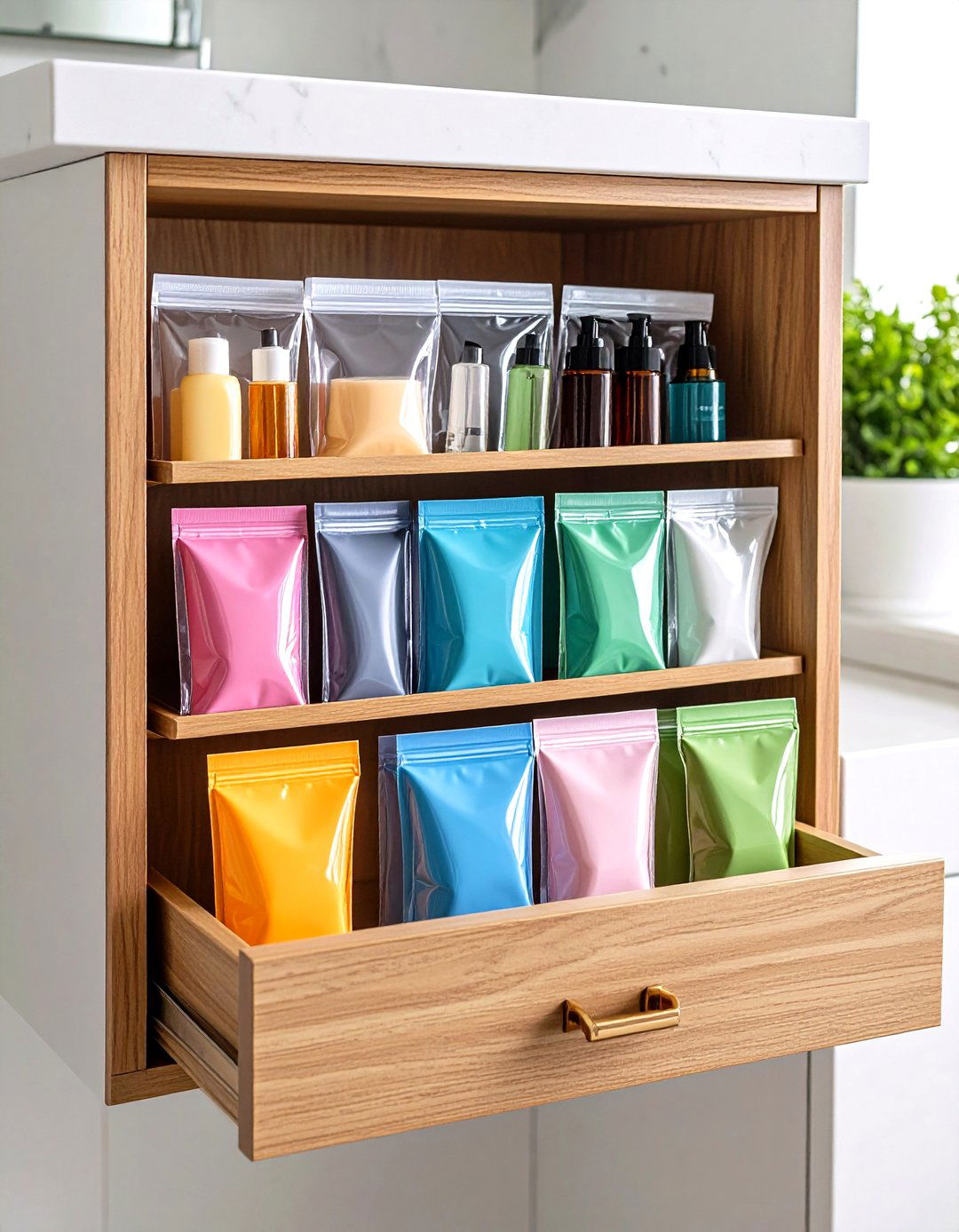
Mini shampoos multiply quickly after hotel stays and clutter even disciplined bathroom drawers. Store them in clear, quart-size zipper pouches, sorted by category—hair care, skincare, oral care—then line those pouches vertically like files. When you need to pack, grab the right pouch and drop it in luggage, no rummaging required. Once a year, decant unused samples into a guest basket and donate sealed extras to shelters, preventing backup overflow. The file method also makes TSA checks easier because each pouch meets liquid limits.
18. Keep Cleaning Wipes in a Pull-Out Drawer Slot
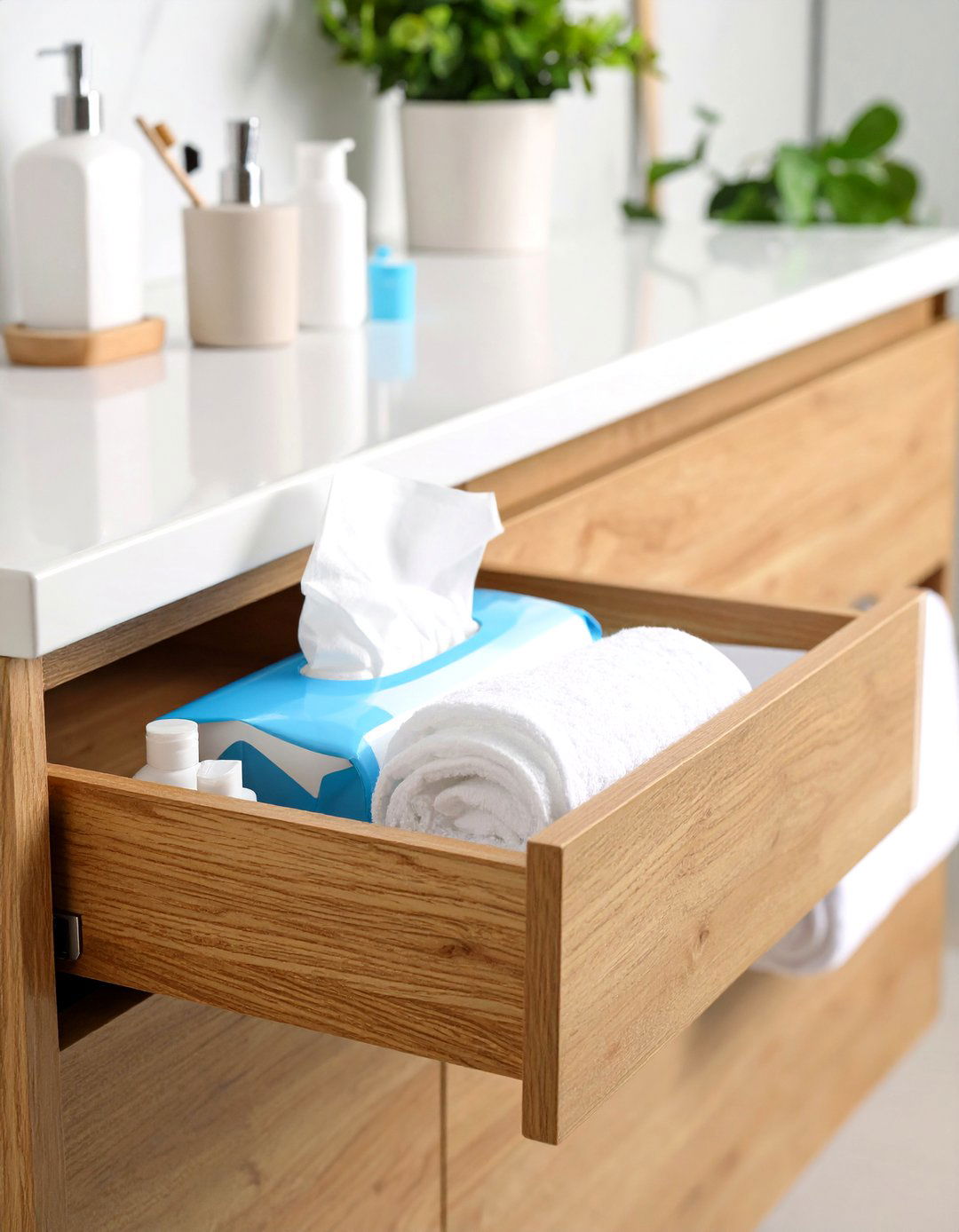
A tidy space stays tidy when spills are addressed immediately. Reserve a slim slot at the front of a bathroom drawer for a pack of disinfectant or makeup-remover wipes. Choose a hard-lid container that opens one-handed, allowing quick swipe-ups of toothpaste splatter. Returning the pack to the same slot each time reinforces the habit of wiping surfaces before closing the drawer, which keeps buildup from ever starting. Replace the pack monthly to avoid dried-out sheets and lingering germs.
19. Refresh Drawer Contents Quarterly with Checklist

Set a phone reminder every three months to open each bathroom drawer and run through a short checklist: toss expired meds, wipe organisers, tighten loose labels, and note dwindling staples. Keeping the cadence seasonal prevents overwhelm and turns upkeep into a five-minute task rather than a weekend overhaul. Post the list on the inside of a cabinet door so anyone in the household can perform the audit. Consistent micro-maintenance ensures your original organisation effort never slides back into chaos.
20. Maintain Zen: One-In, One-Out Bathroom Drawer Rule
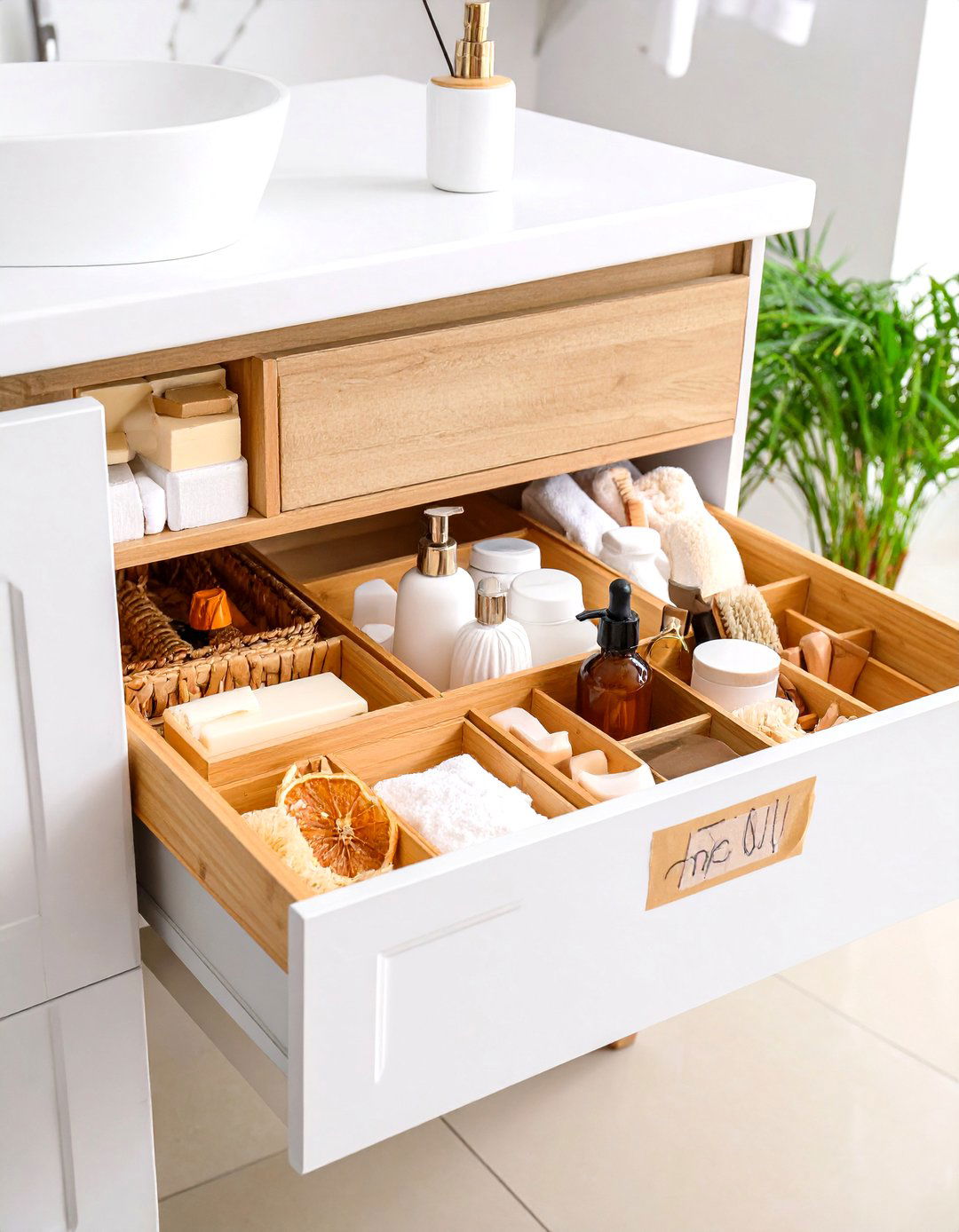
Adopt a simple rule: whenever a new product enters the bathroom drawer, an old or empty item must leave. Over time, this one-in, one-out habit keeps inventory steady and forces intentional purchasing. Tape the rule to the drawer’s underside as a gentle reminder each time you stash a sale find. The practice not only saves physical space but also curbs impulse buys, cutting bathroom spending. After several months, you’ll notice a drawer that feels balanced, functional, and almost self-cleaning—proof that tiny habits beat sporadic marathons of decluttering.
Conclusion:
An orderly bathroom drawer isn’t a luxury; it’s a daily gift you give yourself. By purging first, then tailoring dividers, labels, and upkeep routines to your unique habits, you transform small wooden boxes into quiet allies that streamline grooming and calm the mind. Whether you lean on clear acrylic bins, warm bamboo dividers, stackable trays, or color-coded labels, the ideas above equip you to build a clutter-proof system that flexes with seasons and lifestyles. Embrace these practices, and every glide of the drawer will reinforce a space—and mindset—defined by clarity, ease, and mindful simplicity.



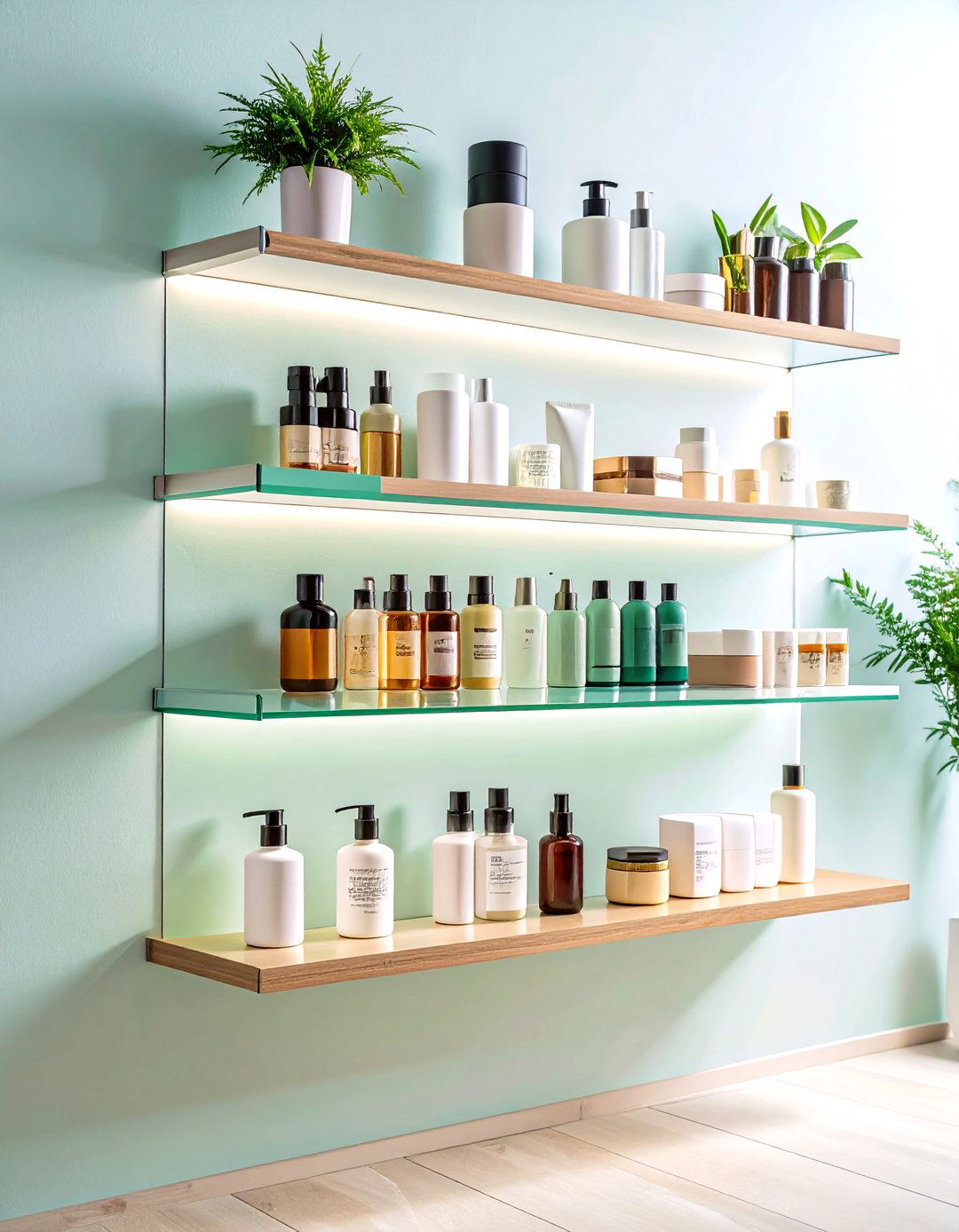
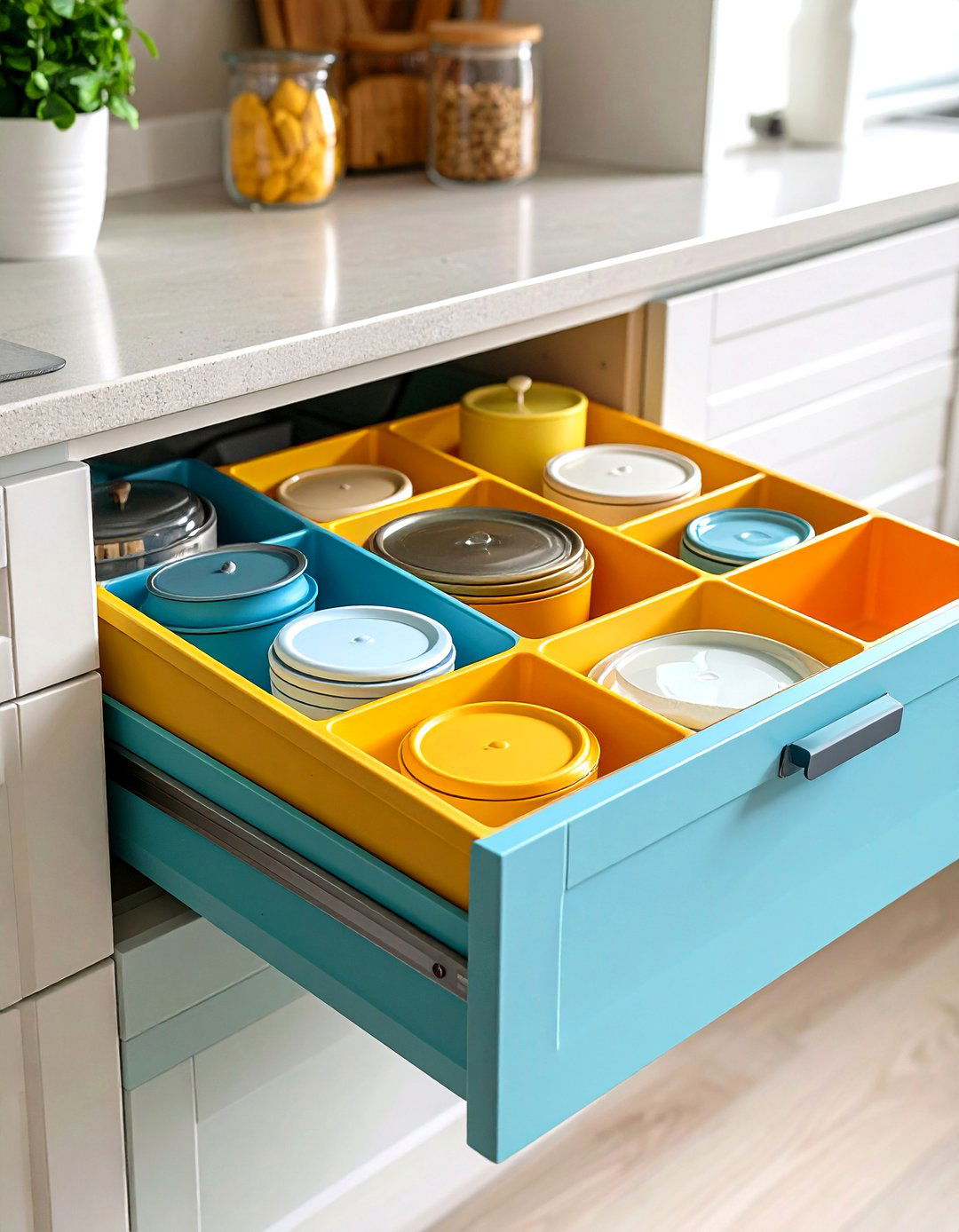
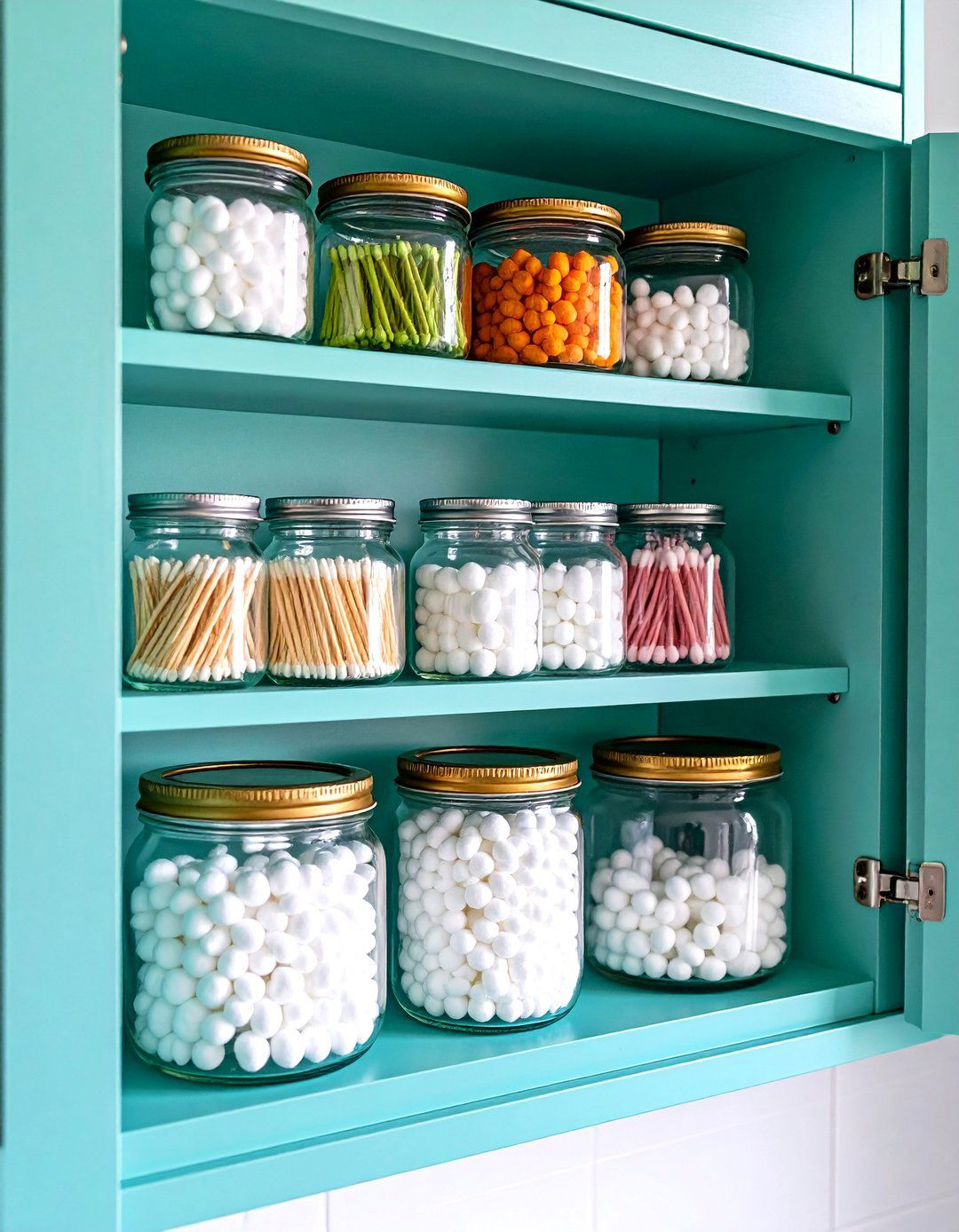

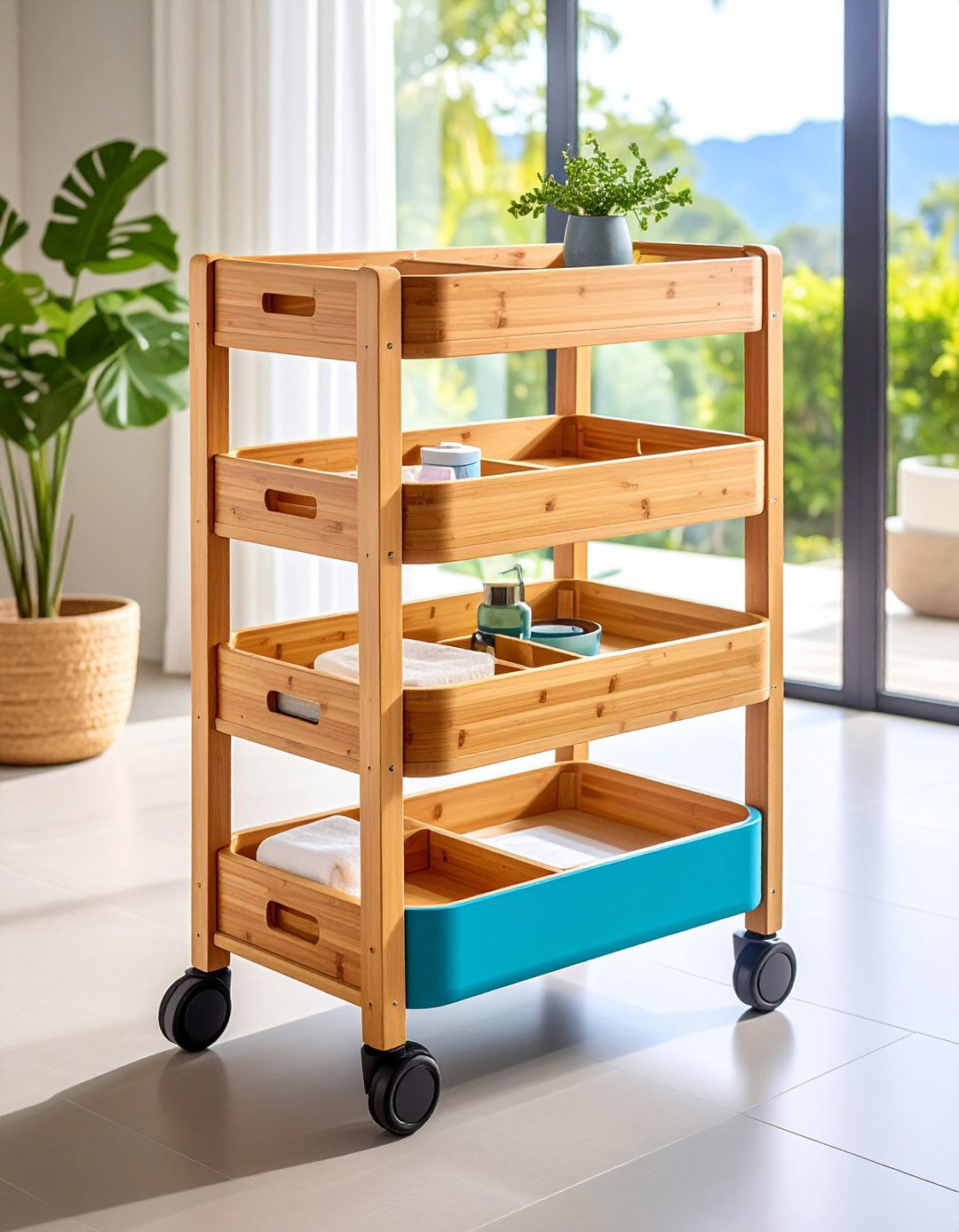

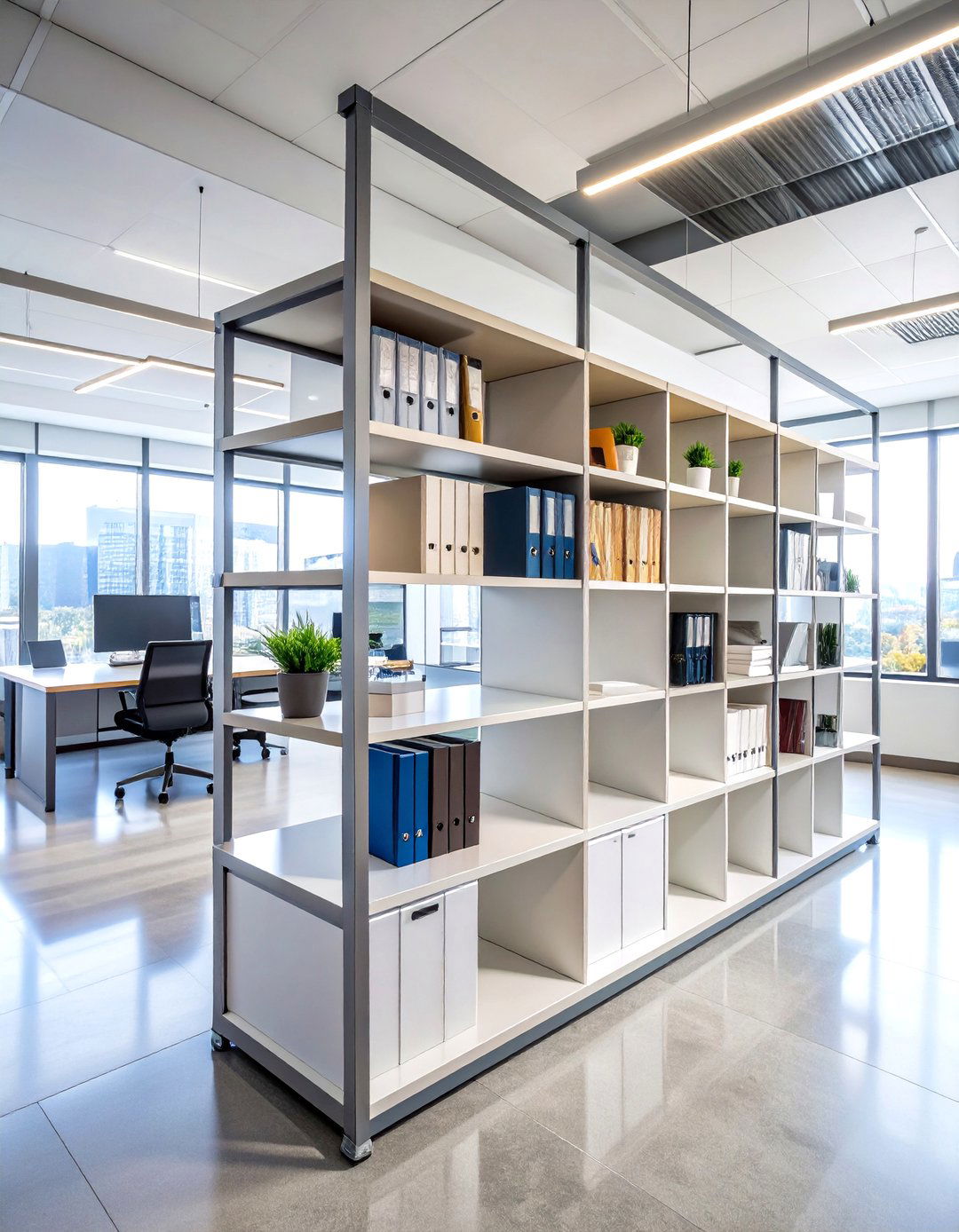
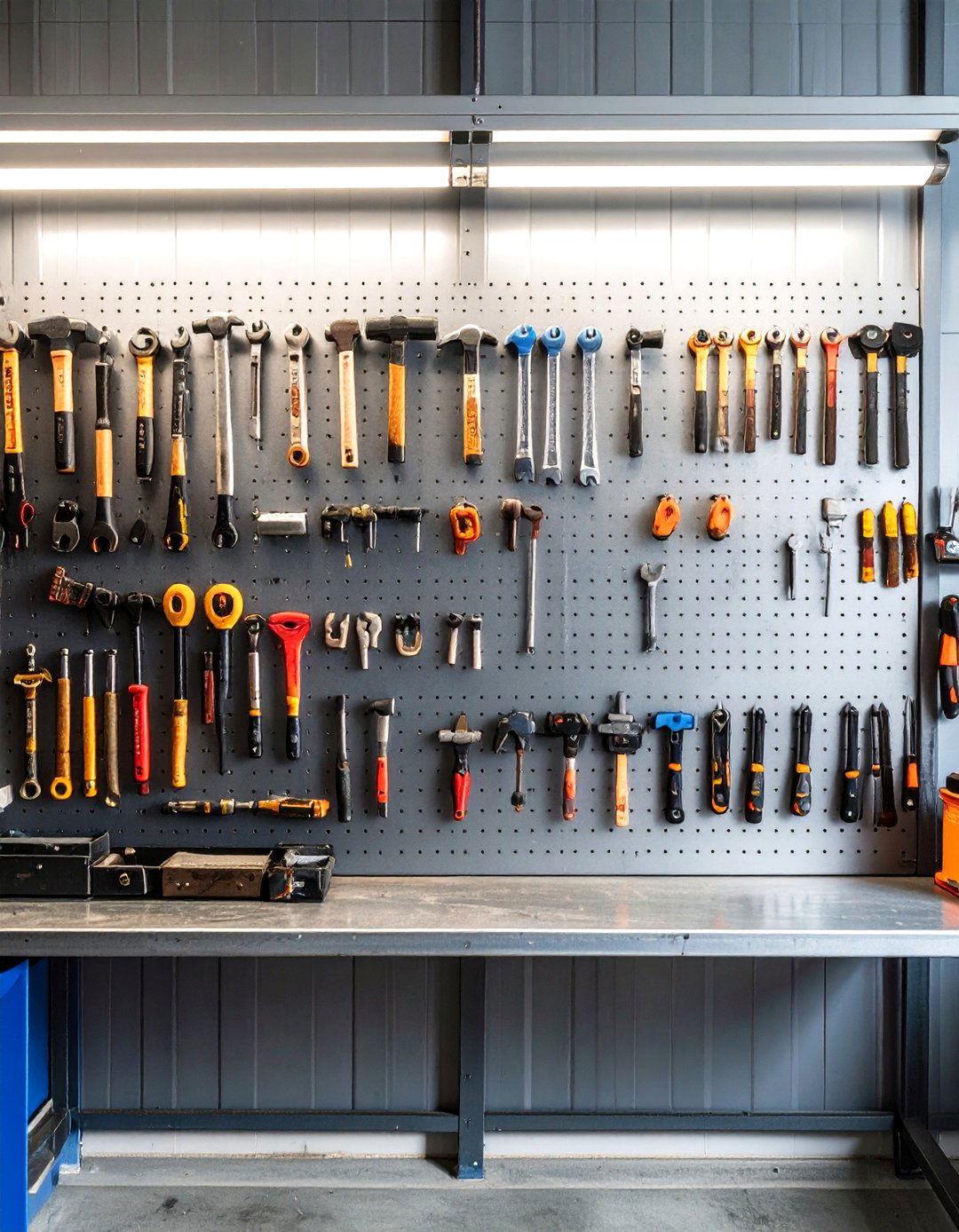
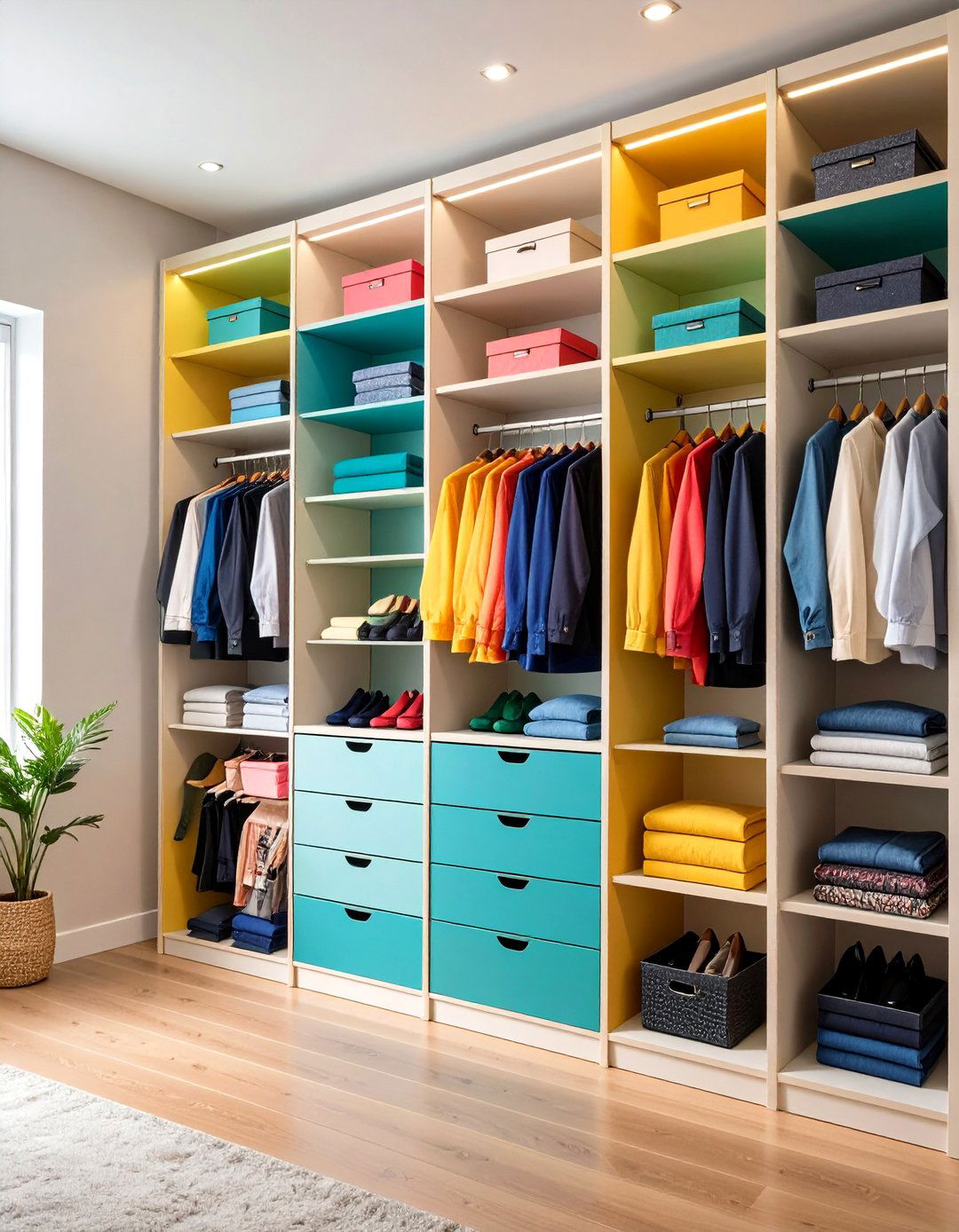
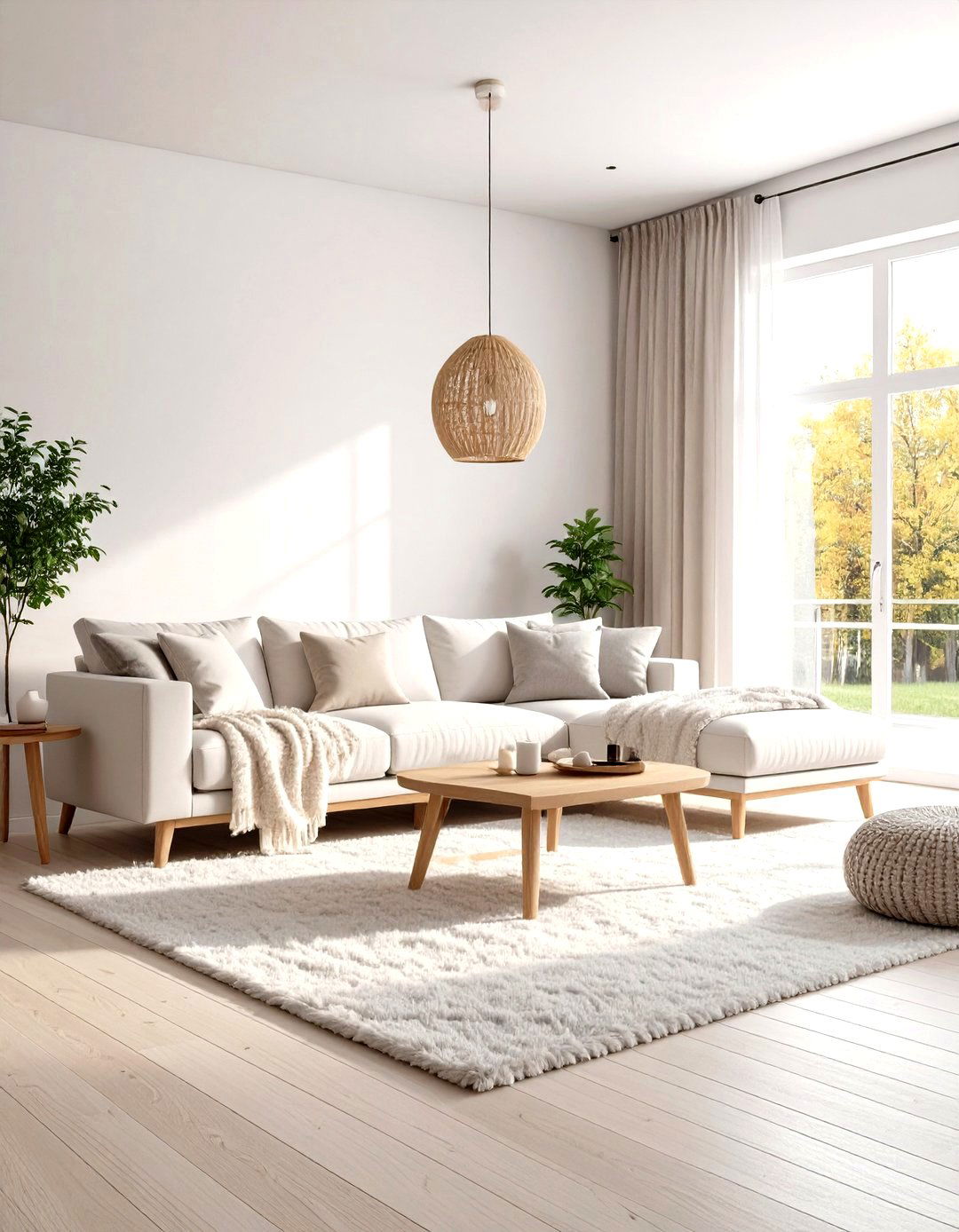
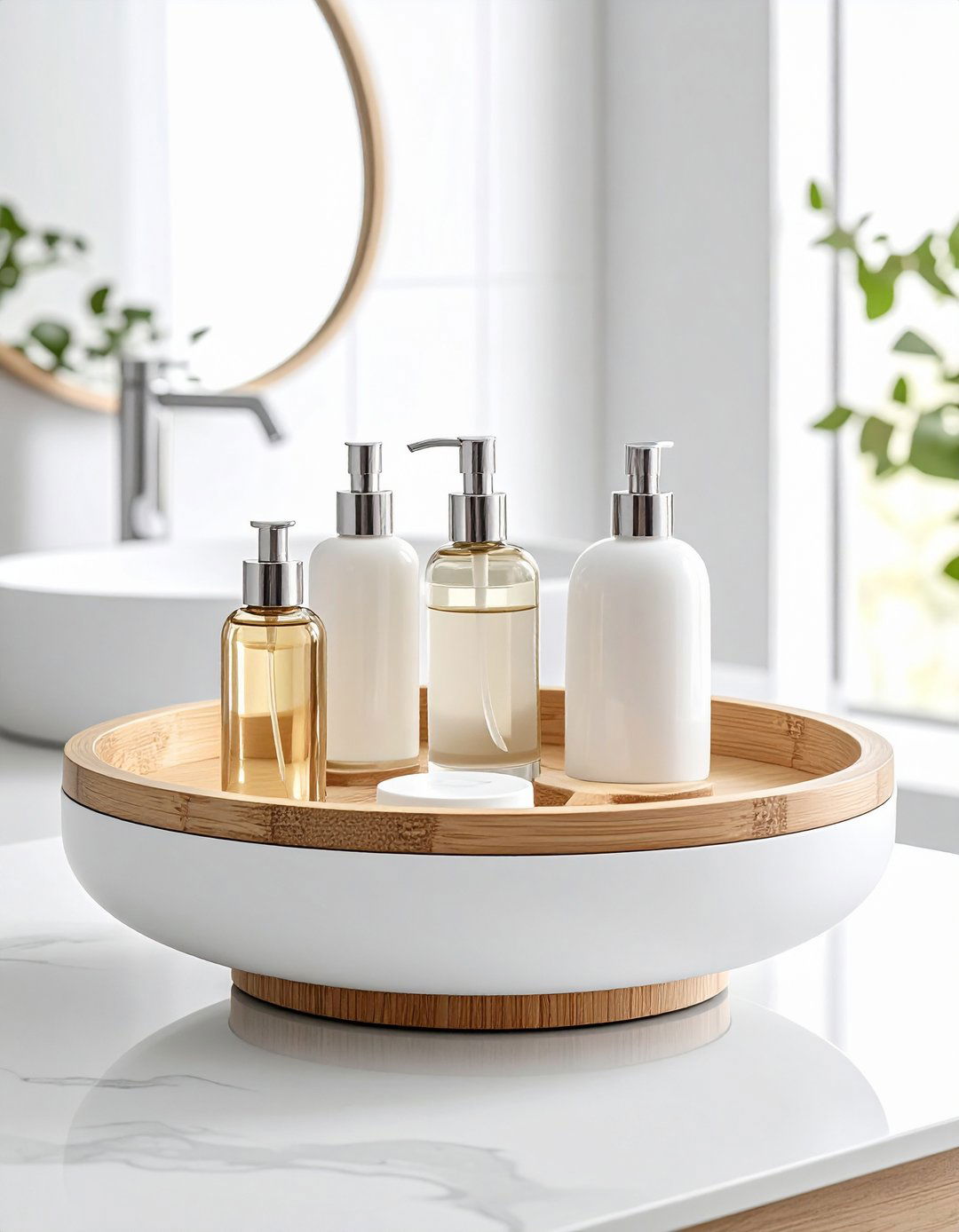
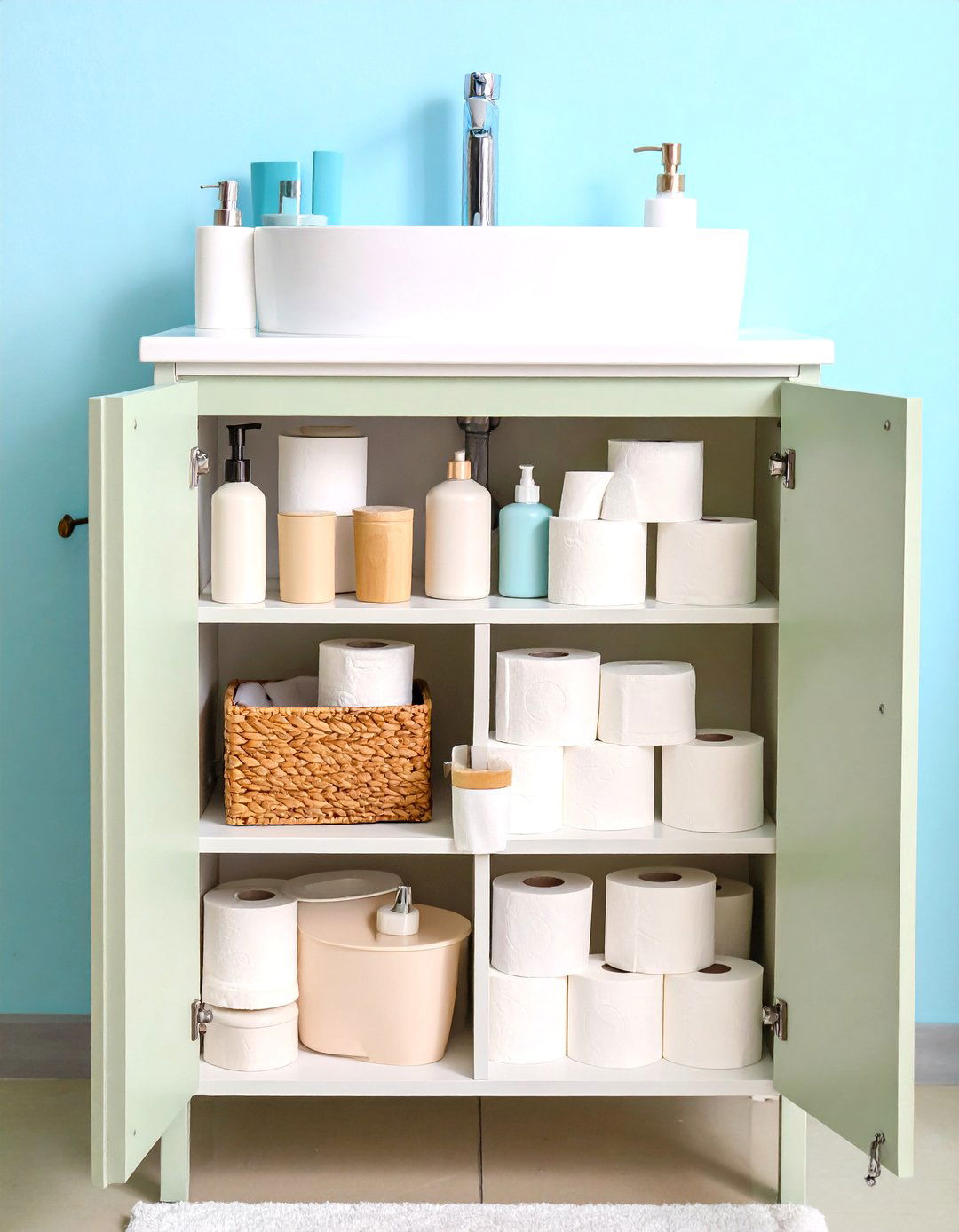

Leave a Reply